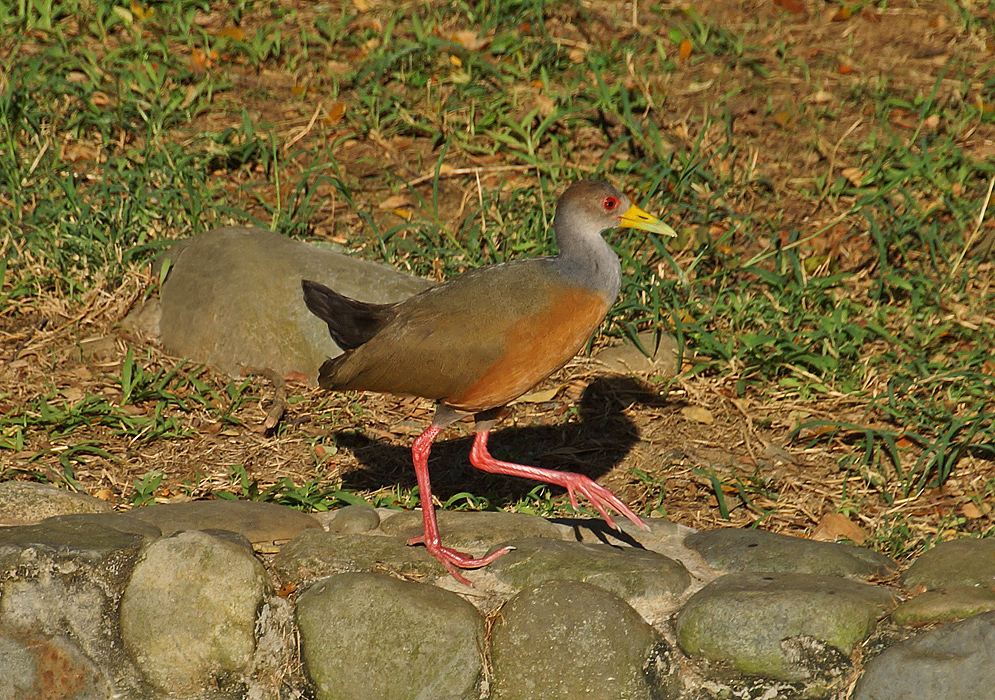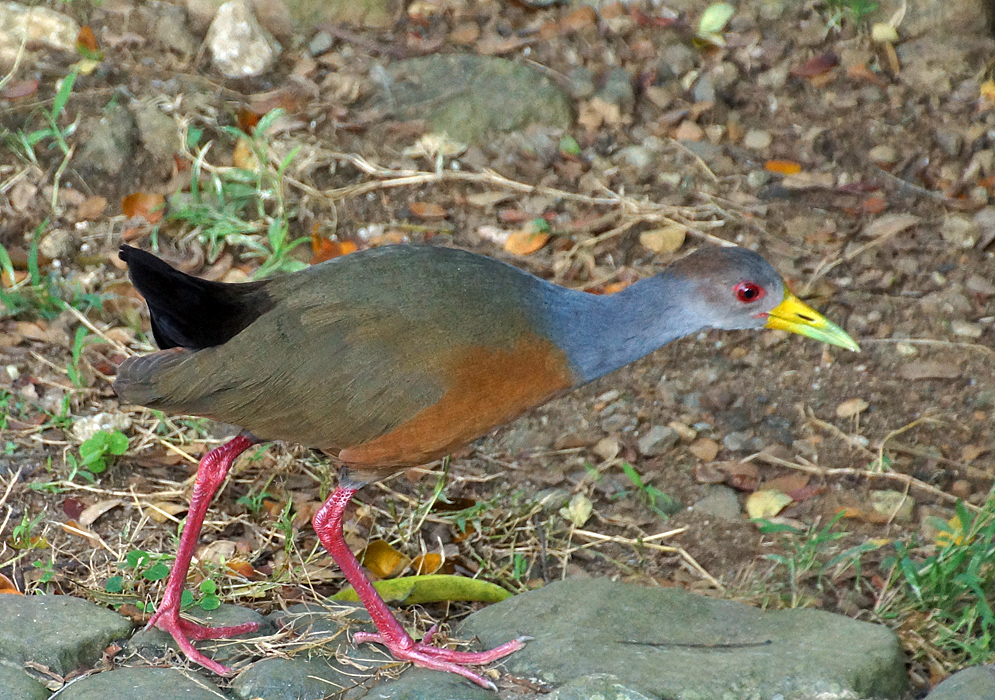This post has 11 Simple Fields-fields attached. Show fields.

The Grey-cowled Wood Rail, is a bird species belonging to the Rallidae family. It inhabits Central and South America, living primarily in forests, mangroves, and swamps. This species is usually found at elevations ranging from sea level up to 6,600 feet. It is divided into two subspecies: A. c. avicenniae, located in southeastern Brazil, and the nominate, which occupies the remaining range. The Grey-cowled Wood Rail is a large bird for its family, with a distinctive appearance that includes a grey head and neck, olive-green to dark brown upperparts, a rufous-colored chest and flanks, and a black belly, rump, and tail. Its legs are coral-red, the bill is bright greenish-yellow, and it has red eyes. The juveniles have a duller appearance, and the subspecies avicenniae is slightly smaller with some distinct color variations. The Grey-cowled Wood Rail is monogamous, with pairs staying together year-round. Its breeding season typically lasts from March to August, during which it builds nests in flat branches or thickets at heights of 3 to 10 feet. The bird lays a clutch of three to seven eggs, incubated by both sexes. The precocial chicks are able to move shortly after hatching. This species feeds on a varied diet, including invertebrates, small vertebrates, molluscs, snails, arthropods, frogs, seeds, grains, leaves, berries, palm fruits, and occasionally water snakes. It also consumes maize, rice, bananas, and even the feces of giant otters. The Grey-cowled Wood Rail is known for perching in shrubbery and trees, characteristic of forest rails. It rarely flies, instead moving to lower branches when disturbed and is generally cautious in behavior. It exhibits unique feeding behaviors, such as hammering snail shells to extract them and jumping high to break off berry clusters. Despite being wary and secretive, it sometimes forages openly in short grass near thickets and in streams or muddy tracks. With an estimated population between five million and 50 million individuals, the Grey-cowled Wood Rail is classified as a least-concern species by the International Union for Conservation of Nature (IUCN). Despite its cautious nature, the bird can tolerate human presence up to about 33 feet before retreating. Photographed in the Valley of Cauca, Colombia.





